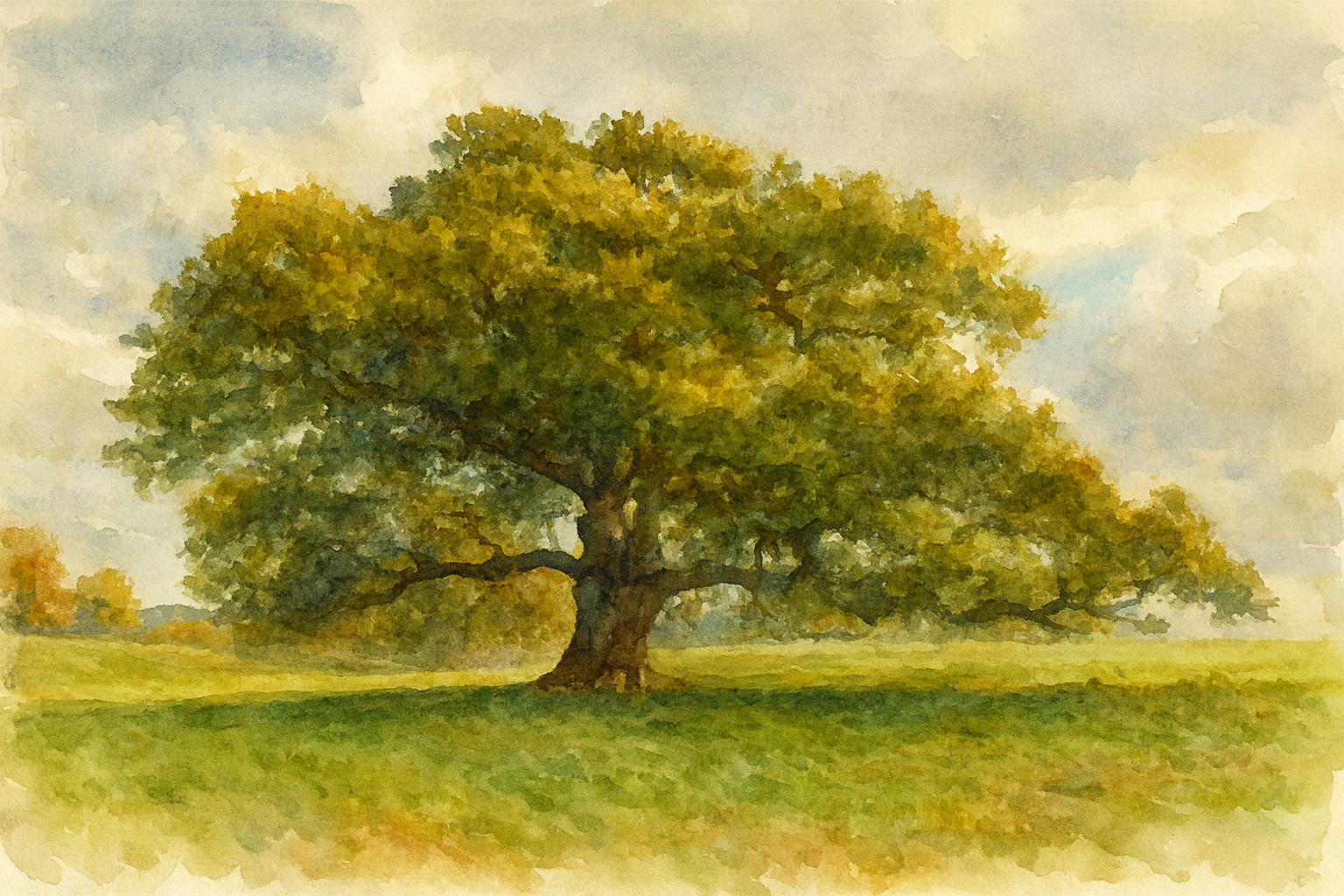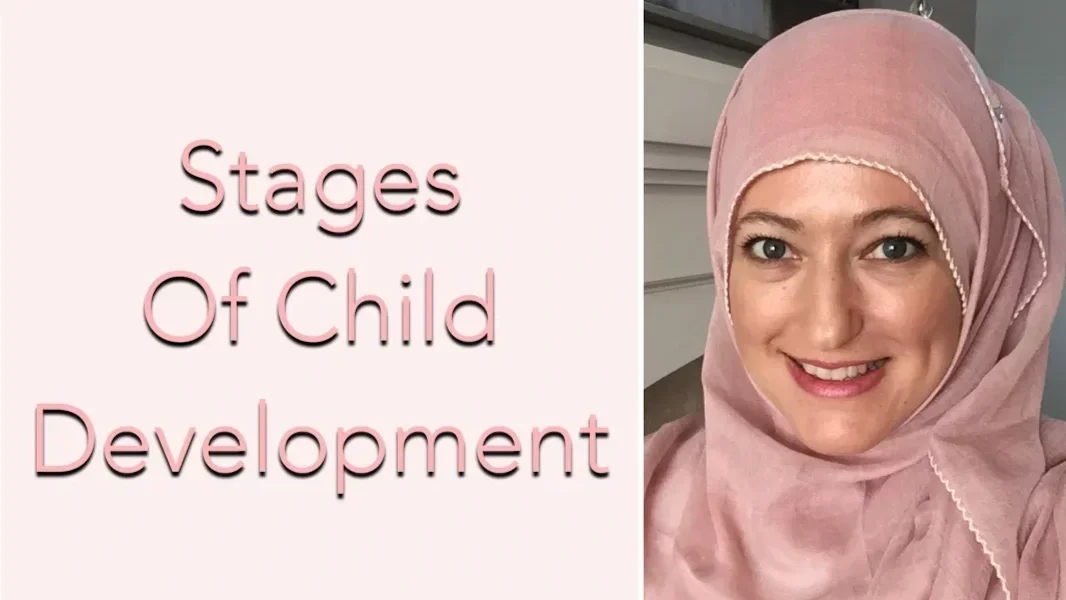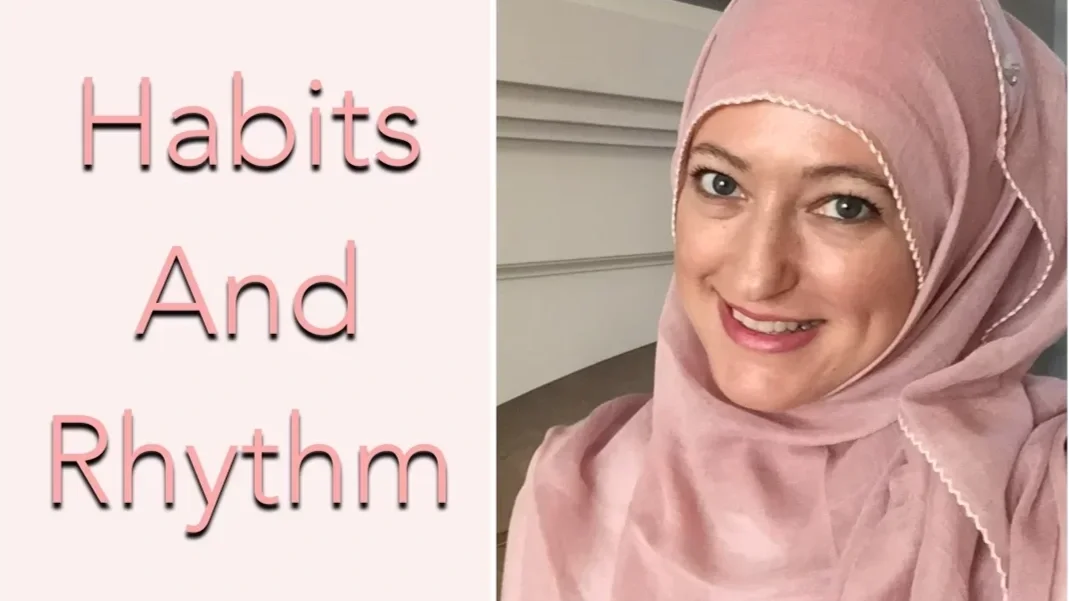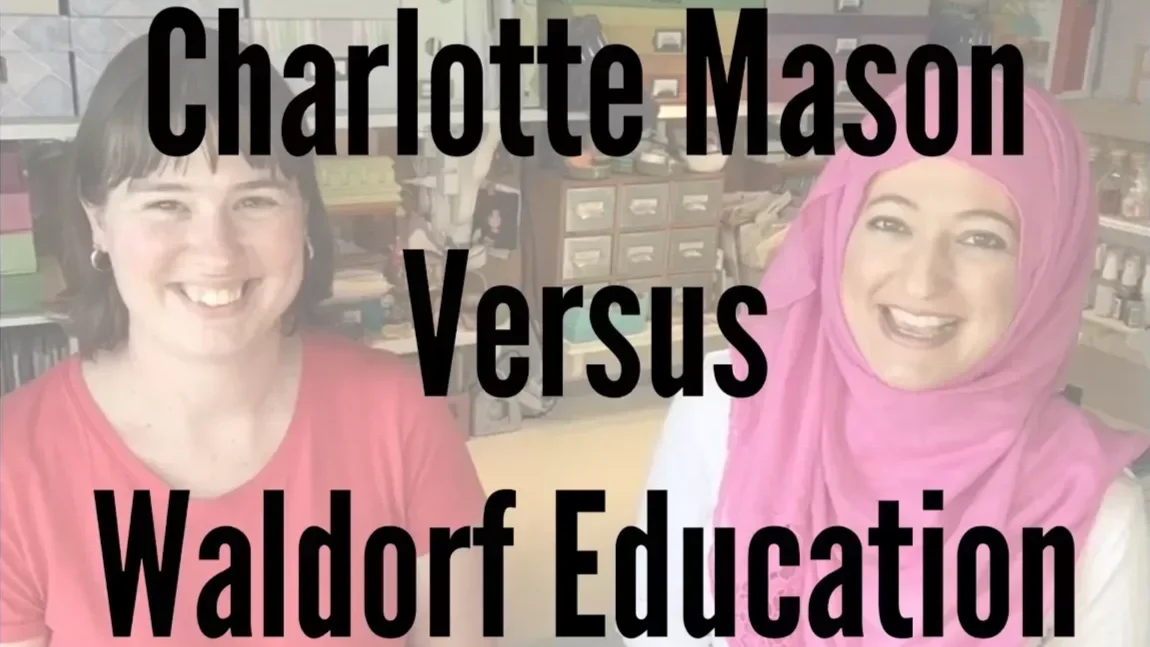
Charlotte Mason Homeschool
Charlotte Mason Philosophy
The ‘will’ is what makes you do things. If you want to do things on a regular basis you can achieve it in one of two ways: Habits or Rhythms. The Charlotte Mason approach to training the will is through habits. Habits can become very strong as we often refer to behavior that is hard to break as ‘force of habit’. Charlotte Mason details exactly how to establish new habits in a step by step narrative in her six volume books. The Waldorf method aims to achieve the same thing through rhythms. Daily, seasonal and yearly cycles help develop habits that are naturally achieved through environment.
Charlotte Mason vs. Waldorf Homeschool
-

Charlotte Mason vs. Waldorf | Toys
Plastic toys are common place now, but not so long ago it was metal and wood toys and before that it was cloth and wood. Both the Charlotte Mason and Waldorf philosophies advocate simple toys. And the Waldorf philosophy shuns plastic all together.
-

Child Development | Charlotte Mason & Waldorf
Head, Heart and Hands is a Waldorf concept regarding the rhythm of the day in that 'head' work is done in the morning, 'heart' work midday and 'hand' work in the afternoon. I approach each lesson with the ''head, heart and hands' concept, as well as my whole year.
-

Chores and Children
This is a small portion from a longer lecture I gave at a homeschooling workshop.The topic of children and chores is one I could talk about far longer than 4 minutes. Charlotte Mason has some good advice on establishing habits and I used those tools to help my children establish good chore habits.
-

Charlotte Mason vs. Waldorf | Habits And The Will
The ‘will’ is what makes you do things. If you want to do things on a regular basis you can achieve it in one of two ways: Habits or Rhythms. The Charlotte Mason approach to training the will is through habits.
-

Charlotte Mason vs. Waldorf | Lesson Comparison
Though there are a lot of similarities between the Charlotte Mason and Waldorf educational philosophies, there are some stark differences. And while both use narration as an educational tool, they both approach it differently.
-

Waldorf VS. Charlotte Mason | Homeschool Education
Ever wonder what the Charlotte Mason and Waldorf philosophies are all about? How similar and how different they are? I'm joined by Challice from Sodbuster Living and together we will have a conversation about the similarities and differences on two educational philosophies: Waldorf and Charlotte Mason.
-

Interview with a Homeschooler | Charlotte Mason for Beginners
If you're new to the Charlotte Mason educational philosophy, you'll want to watch this video and then head directly over to Challice's channel Sodbuster Living for more videos from showing you the practical side of the Charlotte Mason philosophy in action.
-

Are They Compatible? | Charlotte Mason & Waldorf
The short answer is yes! The long answer is there needs to be some understanding on what can be combined and what cannot. There are some deep differences between the Waldorf and Charlotte Mason philosophy, and I will help break down some of the differences in the main lesson block versus the short varied lessons, the duration of lessons, and the use of living books versus storytelling
Charlotte Mason vs. Waldorf | Toys
Plastic toys are common place now, but not so long ago it was metal and wood toys and before that it was cloth and wood. Both the Charlotte Mason and Waldorf philosophies advocate simple toys. And the Waldorf philosophy shuns plastic all together.
In the Waldorf philosophy, wool is ranked number one as a material for toys, followed by silk and wood. When a philosophy pays that much attention to the materials with which your children play, it gives me pause to think about it. It’s especially challenging giving up plastic toys because they are everywhere, affordable and even creative. Legos!! Legos are made of plastic and like any other plastic toy, it loses its luster after a period of time, is prone to becoming brittle and when it breaks, it cannot be fixed, whereas fabric toys are easily mended and wood toys develop a beautiful patina over time, and they too can be mended if broken, though not always. But back to Legos. My kids have enjoyed Legos longer than any other toy. So you can imagine by thrill and surprise when I saw an ‘all natural’ alternative to them recently at Target, no less! Yes, I found Lego shaped wood pieces that can be fitted together the same way as Legos. I promptly picked up a set for my nephew. We own Legos…the plastic kind, in copious amounts, and I don’t worry about it. I also own and make number of wool and wood toys, and they are cherished by my children and me (though less so, the more I make).
Don’t worry if buying expensive wood toys is not in your budget…nature is free! And so therapeutic for adults and children. With the abundant resources in nature, your children will no doubt find and make their own play things and engage themselves far longer than with store bought toys.
Watch the rest of this series here.
Child Development | Charlotte Mason & Waldorf
Head, Heart and Hands is a Waldorf concept regarding the rhythm of the day in that ‘head’ work is done in the morning, ‘heart’ work midday and ‘hand’ work in the afternoon. I approach each lesson with the ”head, heart and hands’ concept, as well as my whole year. Head work can refer to academics and mental exertion in which new learning related to skills is usually acquired versus new learning that is information driven (like history or stories). Heart learning, I define as the touching the emotions through stories. This is a great time to teach history through stories. Heart learning is rest period in the day following a midday meal. Afternoons are great for ‘hand’ work. This work can be knitting, felting, woodwork or in our case, the afternoons are great for our hands-on activities and projects.
How do I approach each lesson with the ‘head, heart and hands’ concept?
I view each lesson as benefiting from an academic component, a hands-on component and a story element. Often, if I don’t have time to pre-read a lesson and deliver it orally, I read from a book. In every lesson there is some narration and it’s usually a written narration, so that is the ‘academic’ component. We aim to draw or do a hands-on activity as well. A lesson doesn’t have to take place in one day, a lesson could span multiple days and have many parts.
How do I approach our day with the ‘heads, heart and hands’ concept?
We do our head learning in the morning. This would be proficiency work in grammar, writing and math. Any other daily assignment goes in the morning as well (that would be our short lessons that usually span a year or at least a season), our read aloud follows lunch as does part of our main lesson which involves reading or storytelling, drawing the main lesson can go here too. Hand work or hands-on projects are saved for the afternoon. This is always the goal, but there are exceptions, of course.
How do I approach our year with the ‘heads, heart and hands’ concept?
We do our academic rich and skill based learning like math and grammar in the fall (though there always seems to be one straggling science unit we are doing in August or September that was left behind from the previous year), we do our history units in the winter and our science units in the spring.
Child Development in Waldorf
Child development in the Waldorf philosophy is divided into different groups with the first stage being roughly from birth to age seven. While there are smaller stages within this stage, this stage is usually characterized by movement and imitation. Although we are always learning using auditory, visual and kinesthetic modes of learning, there is a concentration of kinesthetic learning in the younger years. Young children learning through movement, touching, climbing, and exploration. The other modes of learning are overshadowed in this stage. This is different than being a kinesthetic learner. You may be a kinesthetic learner, so even later in life, that will be your preferred mode of learning, but all children pass through a phase of kinesthetic learning and that’s from birth to age seven (roughly). This is also the age of imitation. Young children will imitate others in this stage. It’s how they learn. Be mindful of your behavior around children because they will copy you in all you do both good and bad. This is a good reminder to reflect on our own behaviors and actions. When children clean, they are copying you, they don’t want to clean by themselves, rather they want to do what you are doing when you are doing it. This is not an opportunity to set your children to chores, rather it’s an opportunity to slow down your chores to include your children. Invite them to cook as well if you feel comfortable.
The following seven years is dedicated to the emotional development, again we are always developing, but between seven and 14, there is a concentration of the emotions and a greater sense of self awareness. The ‘nine year’ change is during this period and it can be a hard transition for children. It’s a time when children realize they have a past and a future. It’s often when children decide what they want to be (not career, but kind of person: smart, funny, loving, etc.). It’s a time of anxiety and discovery and finding oneself. The Waldorf philosophy recognizes this and the curriculum reflects the changes with lessons on the ‘Jewish Prophets’ and the stories of Moses and the Jews wandering the desert finding their home as well as lessons in building shelters. This provides relation and comfort for the child. There’s more to say on both these stages, but let’s move on to the last stage during the academic years (there are many stages a person goes through, but the ones in the younger years are formative and obvious).
The following seven years starting with puberty are a time for deep thinking, pondering and action. Young adults (I call them adults) starting at age 13 are concerned with change and justice. They tend to be impulsive, but capable of deep thought and critical thinking. This is a good time to have thought provoking discussions and given that the youth has learned much in his previous years of school and has developed his empathy though stories, he can enjoy the satisfying discourse of conversations deep with ‘why’ questions, analyzing the actions of historical figures as well as contemplating philosophy and all parts of the science that are unseen. This is my personal explanation of what can be discussed during this time, but there is far more that a youth is capable of. Don’t forget that we are always learning and acquiring information, so alongside deeper discussion, there is still an acquisition of information. But now, the reality of history and the present set it, the horrors and injustices can be exposed whereas previously the teacher chose carefully what stories and information to share to be sensitive to the developing child.
I freely admit that my experience, knowledge and biases have made their way into my explanation of the different developmental stages. Please feel free to leave your comments and opinions below.
Chores and Children
This is a small portion from a longer lecture I gave at a homeschooling workshop.The topic of children and chores is one I could talk about far longer than 4 minutes. Charlotte Mason has some good advice on establishing habits and I used those tools to help my children establish good chore habits.
The playlist includes lectures from this series.
Charlotte Mason vs. Waldorf | Habits And The Will
The ‘will’ is what makes you do things. If you want to do things on a regular basis you can achieve it in one of two ways: Habits or Rhythms. The Charlotte Mason approach to training the will is through habits. Habits can become very strong as we often refer to behavior that is hard to break as ‘force of habit’. Charlotte Mason details exactly how to establish new habits in a step by step narrative in her six volume books. The Waldorf method aims to achieve the same thing through rhythms. Daily, seasonal and yearly cycles help develop habits that are naturally achieved through environment.
See other excerpts of the lecture to understand more on the differences between the two philosophies.
I do add my own experience and knowledge to my talks, so it may not be fully authentically Charlotte Mason or Waldorf.
Charlotte Mason vs. Waldorf | Lesson Comparison
Though there are a lot of similarities between the Charlotte Mason and Waldorf educational philosophies, there are some stark differences. And while both use narration as an educational tool, they both approach it differently.
If you are more familiar with either philosophy and would like to add to the discussion, please leave a comment below. I welcome your suggestions and corrections.
Watch the full lecture on my other channel Homeschooling For Muslims.
The PowerPoint presentations and my notes are available for viewing or downloading.
Waldorf VS. Charlotte Mason | Homeschool Education
Ever wonder what the Charlotte Mason and Waldorf philosophies are all about? How similar and how different they are? I'm joined by Challice from Sodbuster Living and together we will have a conversation about the similarities and differences on two educational philosophies: Waldorf and Charlotte Mason.
I'm sorry for all the outside noise in this video, my neighbors were working on their metal fence and you can hear that a lot during this video! Not to mention trucks and cars driving by...ah well, all I can say is the nine children in the house while we recorded this video did great!!!
True to form, I did forget to mention a major difference between the philosophies: Duration of lessons.
The Waldorf lessons tend to be focused, long and involved taking up to two hours. The lessons in Charlotte Mason tend to be short and varied taking as little at 10 minutes when the children are young up to 40 minutes when the students are older.
Both philosophies stronger support writing with each lesson in the form of dictation, narration or copywork. Narration can be oral, written or illustrated. A combination of these works best.
Check out Challice's Channel.
Here are the books we mentioned in the video: The Charlotte Mason original series.
Where habits are mentioned in the books.
This is the awesome lecture/podcast I referred to in the video by Scott Olmsted.
Interview with a Homeschooler | Charlotte Mason for Beginners
If you're new to the Charlotte Mason educational philosophy, you'll want to watch this video and then head directly over to Challice's channel Sodbuster Living for more videos from showing you the practical side of the Charlotte Mason philosophy in action.
Check out the series on Challice's Channel for beginners to Charlotte Mason.
Are They Compatible? | Charlotte Mason & Waldorf
The short answer is yes! The long answer is there needs to be some understanding on what can be combined and what cannot. There are some deep differences between the Waldorf and Charlotte Mason philosophy, and I will help break down some of the differences in the main lesson block versus the short varied lessons, the duration of lessons, and the use of living books versus storytelling. There are places within both philosophies in which they are compatible, and where there is that overlap, you can get the best of both worlds. During a main lesson, there are opening activities, review of previous lesson, the lesson work and the new learning. The main lesson takes about two hours. Comparatively, the Charlotte Mason approach advises short, varied lessons taking about 10 minutes when children are young and upwards of 30-40 minutes as students get older. To combine the two, use your opening activities to do several short lessons using living books. You can include your daily work to make it Charlotte Mason focused with work that is achievable and keeps the students' focus before they can tire or lose interest.
While Waldorf advocates for storytelling lesson, Charlotte Mason advises the use of Living Books. Living books are usually written by a single author who is passionate and knowledgeable about a topic who writes in an engaging way. Books and written work is arguably work that has been written and rewritten to the best quality. Facts have been checked, work has been edited and the author is presenting a final project that is her best work. Charlotte Mason advises presenting that high quality work in its original form rather than diluting it and reducing it with your own words which may include poor vocabulary or grammar or may not express the points as well. Conversely, in Waldorf, it is advised that information is first processed by the teacher who owns the information in order to deliver the lesson, not from a living book but that the teacher IS the living resource.
To combine the two, I use living books when I don't have time to prepare a main lesson. I use living books often in our open activities, and I use living books as research content for myself when preparing for a lesson.
